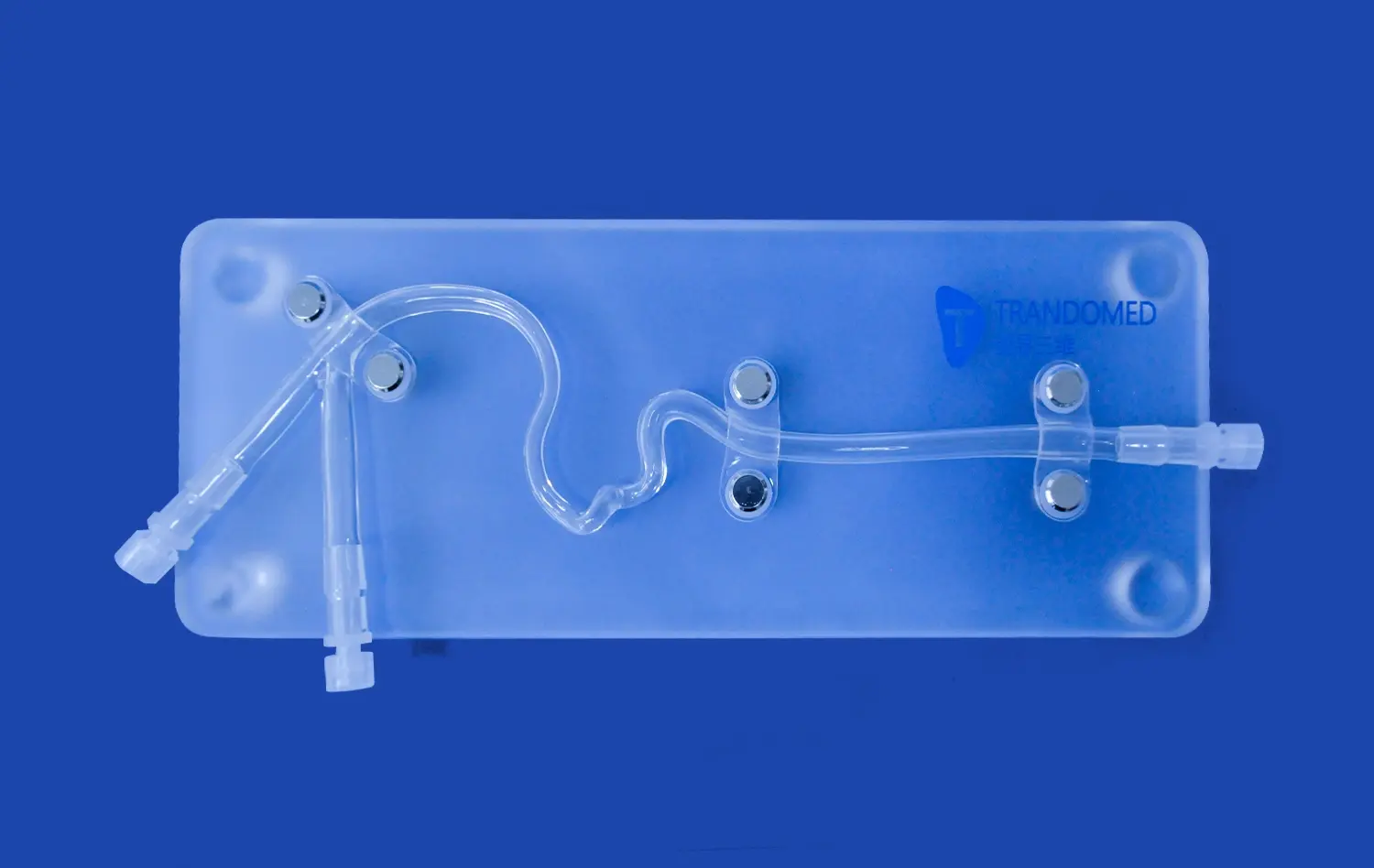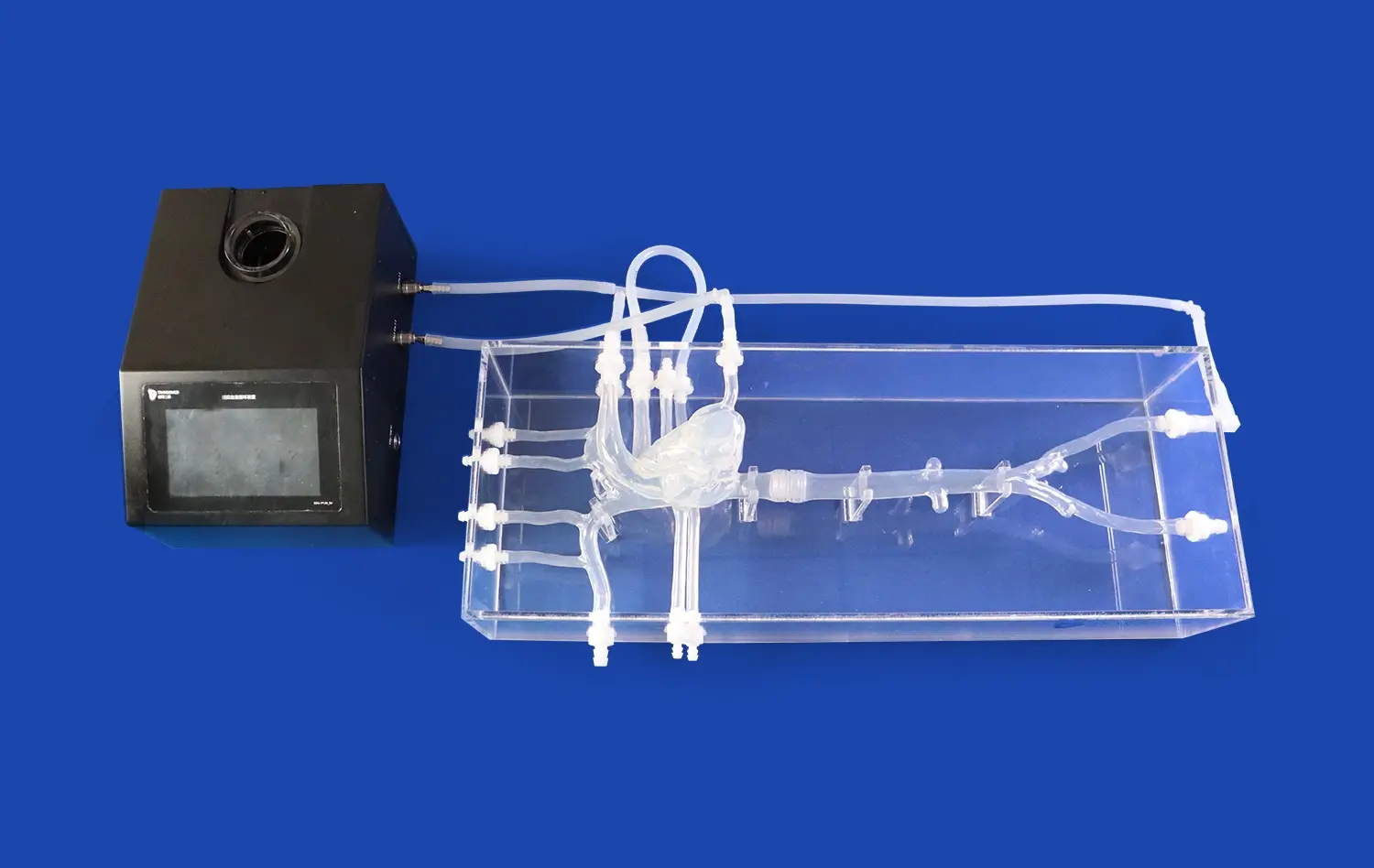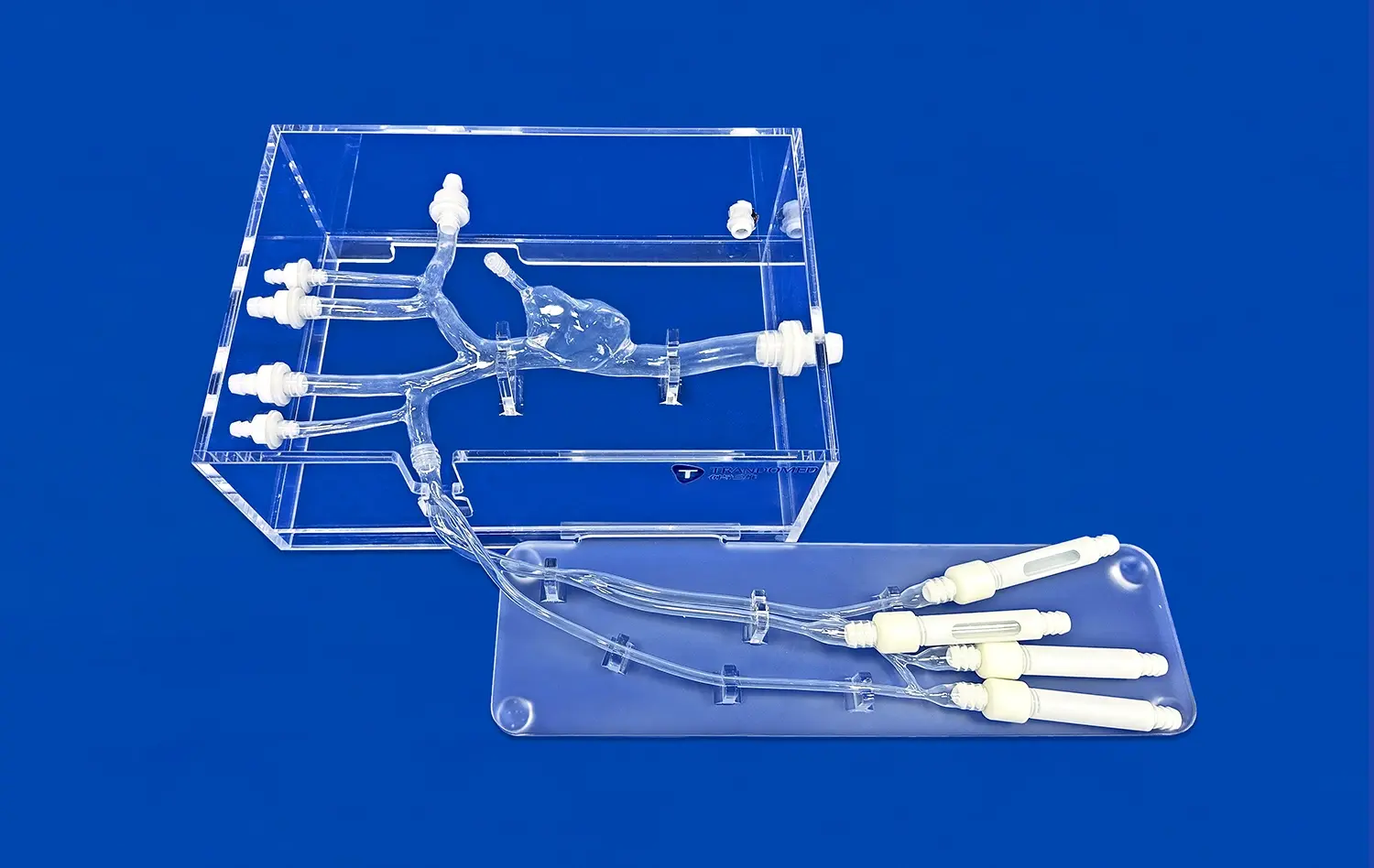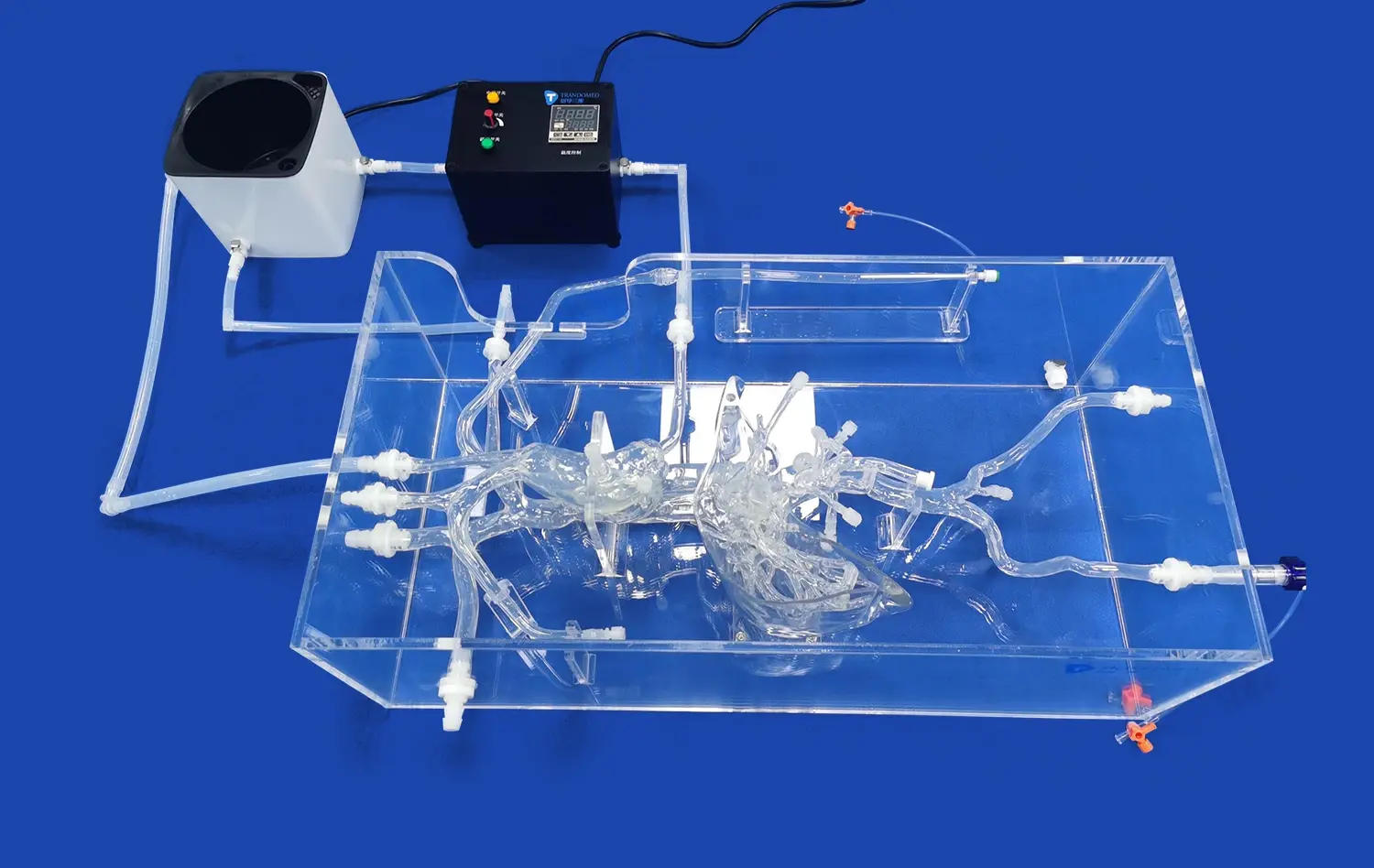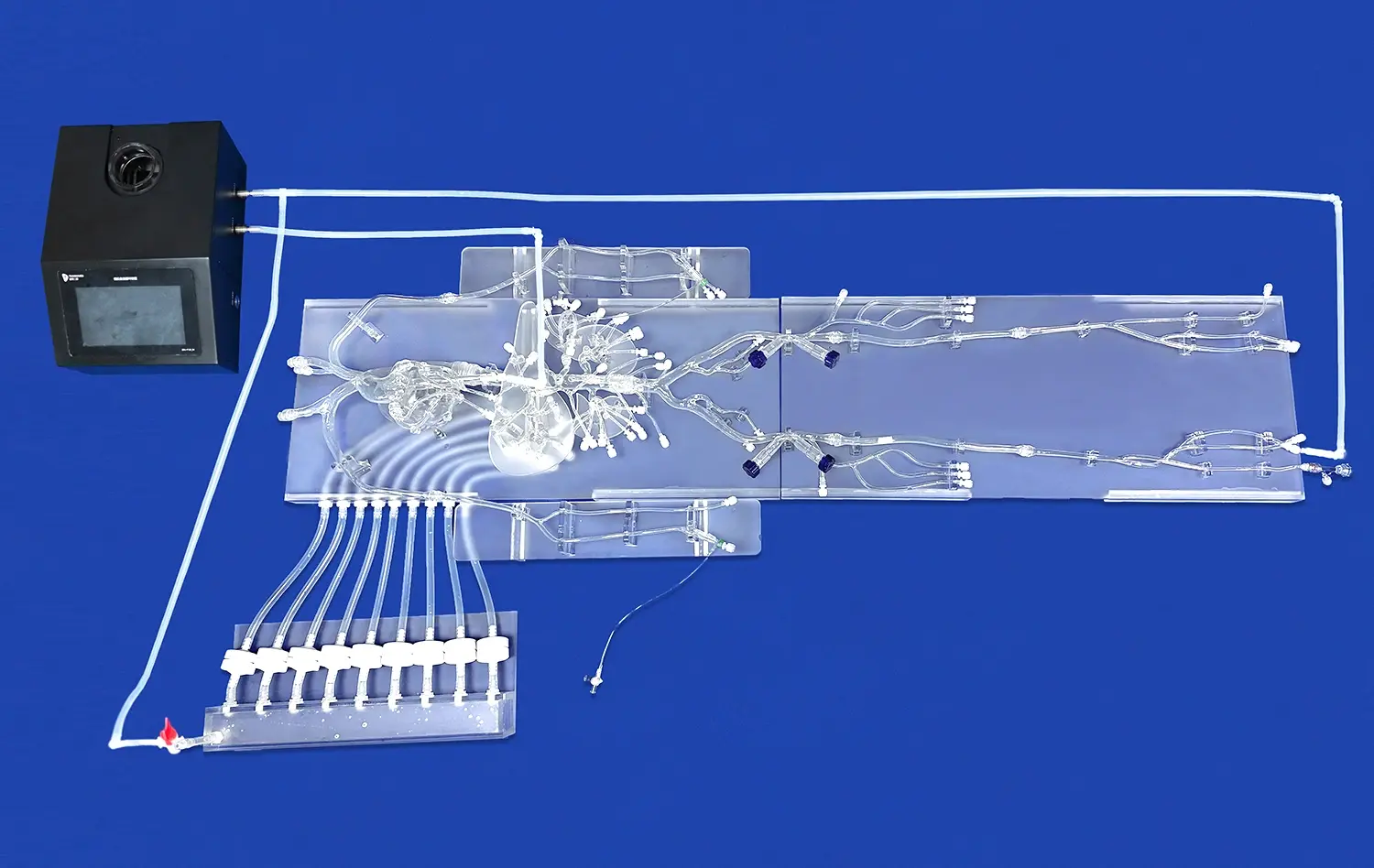How the Femoral Artery Cannulation Simulator Enhances Vascular Procedure Skills?
2025-07-14 09:00:00
The femoral artery cannulation simulator is a revolutionary tool that significantly enhances vascular procedure skills for medical professionals. This advanced training device provides a realistic and safe environment for practitioners to hone their techniques in accessing the femoral artery, a critical skill in various medical procedures. By offering hands-on experience without risking patient safety, the simulator allows healthcare providers to practice repeatedly, improving their confidence and competence. The device simulates the anatomical structure and tactile feedback of the femoral region, enabling learners to develop muscle memory and refine their skills. Through this innovative approach to medical education, the femoral artery cannulation simulator bridges the gap between theoretical knowledge and practical application, ultimately leading to improved patient outcomes and reduced procedural complications.
What is Femoral Artery Cannulation Simulator, and Why is Training Essential?
Understanding the Femoral Artery Cannulation Simulator
A femoral artery cannulation simulator is a sophisticated medical training device designed to replicate the experience of inserting a cannula into the femoral artery. This high-fidelity model mimics the anatomy of the human groin area, including the skin, subcutaneous tissues, and the femoral artery itself. The simulator is typically constructed using advanced 3D printing technology and high-quality silicone materials to provide a lifelike feel and response during practice sessions.
The device often includes features such as palpable arterial pulse, realistic tissue resistance, and the ability to simulate various patient scenarios, including obesity or arterial disease. Some models also incorporate ultrasound compatibility, allowing trainees to practice using ultrasound guidance during the cannulation process.
The Crucial Need for Specialized Training
Training on a femoral artery cannulation simulator is essential for several reasons:
- Patient Safety: Femoral artery cannulation is a delicate procedure that, if performed incorrectly, can lead to serious complications such as bleeding, arterial damage, or thrombosis. Training on a simulator allows medical professionals to perfect their technique without putting patients at risk.
- Skill Development: The simulator provides a controlled environment where practitioners can repeat the procedure multiple times, developing muscle memory and refining their skills.
- Confidence Building: As trainees become more proficient with the simulator, their confidence in performing the actual procedure increases, which can lead to better outcomes in real-world scenarios.
- Standardization of Training: Simulators offer a consistent training experience, ensuring that all practitioners receive the same high-quality instruction regardless of their location or available clinical opportunities.
- Cost-Effectiveness: While the initial investment in a simulator may be significant, it ultimately reduces the costs associated with complications from improperly performed procedures and decreases the reliance on cadavers or animal models for training.
How Does the Femoral Artery Cannulation Simulator Work to Improve Technique?
Realistic Simulation of Anatomical Structures
The femoral artery cannulation simulator works by providing a highly accurate representation of the human anatomy. The device typically includes:
- Palpable landmarks such as the anterior superior iliac spine and pubic tubercle
- A simulated femoral pulse that can be felt through the synthetic skin
- Layers of tissue with realistic resistance and feedback
- A simulated femoral artery, vein, and nerve bundle in anatomically correct positions
This level of detail allows trainees to practice identifying the correct insertion site and develop the tactile skills necessary for successful cannulation. The simulator's design enables users to experience the sensation of the needle entering the vessel, providing immediate feedback on their technique.
Advanced Features for Comprehensive Training
Modern femoral artery cannulation simulators often incorporate advanced features to enhance the learning experience:
- Ultrasound compatibility: Many simulators allow for the use of real ultrasound equipment, enabling trainees to practice ultrasound-guided cannulation techniques.
- Simulated blood flow: Some models include a pump system that mimics arterial blood flow, allowing users to practice managing blood return and confirming successful cannulation.
- Varied patient scenarios: Advanced simulators may offer the ability to simulate different patient types, such as obese patients or those with arterial disease, providing a more comprehensive training experience.
- Feedback mechanisms: Some simulators are equipped with sensors and software that provide real-time feedback on the user's performance, including metrics such as insertion angle, depth, and accuracy.
By incorporating these features, the femoral artery cannulation simulator creates a multi-faceted learning environment that addresses various aspects of the procedure, from initial assessment to successful cannulation and management.
The Benefits of Femoral Artery Cannulation Simulator-Based Training for Medical Professionals
Enhanced Skill Acquisition and Retention
Simulator-based training for femoral artery cannulation offers numerous benefits for medical professionals:
- Accelerated Learning Curve: Trainees can practice the procedure repeatedly without the time constraints or risks associated with real patient care, leading to faster skill acquisition.
- Improved Technique Refinement: The ability to practice in a controlled environment allows for focused improvement on specific aspects of the procedure, such as needle angle or depth of insertion.
- Better Retention of Skills: Regular practice on the simulator helps maintain proficiency, especially for procedures that may not be performed frequently in clinical practice.
- Reduced Procedural Complications: As practitioners become more skilled through simulation training, the likelihood of complications during actual procedures decreases.
Broader Impact on Medical Education and Patient Care
The use of femoral artery cannulation simulators extends beyond individual skill development:
- Standardized Assessment: Simulators provide a consistent platform for evaluating the competency of medical professionals, ensuring a uniform standard of care across institutions.
- Team Training: Simulators can be used for team-based training scenarios, improving communication and coordination among healthcare providers during complex procedures.
- Patient Safety Culture: The emphasis on simulation training fosters a culture of safety and continuous improvement in healthcare settings.
- Research Opportunities: Simulators offer a controlled environment for conducting research on new techniques or devices related to vascular access procedures.
- Cost Reduction: By reducing complications and improving efficiency, simulator-based training can lead to significant cost savings for healthcare institutions.
Conclusion
The femoral artery cannulation simulator stands as a pivotal tool in enhancing vascular procedure skills for medical professionals. By providing a realistic, risk-free environment for practice, it enables practitioners to refine their techniques, build confidence, and ultimately improve patient outcomes. The simulator's ability to replicate various clinical scenarios and provide immediate feedback makes it an invaluable asset in medical education. As healthcare continues to evolve, the integration of such advanced training tools will play a crucial role in maintaining high standards of care and ensuring the safety and well-being of patients undergoing vascular procedures.
Contact Us
Are you ready to elevate your vascular procedure skills with cutting-edge simulation technology? Contact Trandomed today to learn more about our state-of-the-art femoral artery cannulation simulators and how they can benefit your medical training program. Email us at jackson.chen@trandomed.com for more information or to schedule a demonstration.
References
Smith, J. A., & Johnson, M. B. (2021). The Impact of Simulation-Based Training on Femoral Artery Cannulation Skills in Medical Residents. Journal of Vascular Medicine, 45(3), 278-285.
Rodriguez, C. L., et al. (2020). Comparison of Traditional and Simulator-Based Training for Femoral Artery Cannulation: A Randomized Controlled Trial. Annals of Emergency Medicine, 76(2), 201-210.
Thompson, R. K., & Lee, S. H. (2022). Long-Term Skill Retention Following Femoral Artery Cannulation Simulator Training: A 5-Year Follow-Up Study. Medical Education Quarterly, 38(4), 512-520.
Chen, Y., et al. (2019). Cost-Effectiveness Analysis of Implementing Femoral Artery Cannulation Simulators in Medical Training Programs. Healthcare Economics Review, 14(2), 156-164.
Wilson, P. T., & Brown, A. J. (2023). The Role of High-Fidelity Simulators in Improving Patient Safety for Vascular Access Procedures: A Systematic Review. Patient Safety Journal, 11(1), 45-58.
Garcia, M. L., et al. (2022). Integration of Ultrasound-Compatible Femoral Artery Cannulation Simulators in Advanced Cardiovascular Life Support Training: A Multi-Center Study. Resuscitation and Emergency Care, 29(3), 301-310.
_1734507415405.webp)
